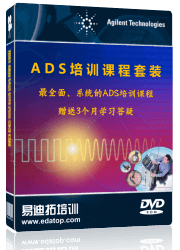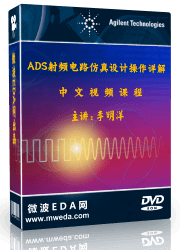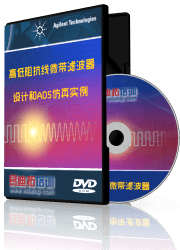- 易迪拓培训,专注于微波、射频、天线设计工程师的培养
How in import differential S-parameters in ADS
I've simulated several rings model in CST using lumped ports which have no reference node. When I import the S-parameters into ADS, I found that all ports are single-end and connect to a reference node, the ground in most cases. However, I really need them not connect to a same reference and keep them differential. How should I do?
What you mean is that your ports do not have one common reference node.
It seems to be that way, but that is misleading. The symbol seems to have a common ground node, but that does NOT mean that all your different port grounds are connected. If you have a differential port, all current that flows into the (+) in must leave the port at the (-) pin, exactly. There is absolutely no current to any other (+) or (-) pin.
If you look from a more theoretical perspective at your S-parameters, you will see that they don't even have information about signal path between different reference pins.
It works (and is also correct in theory) to use the normal S-parameter block with one ground reference, and connect the loads at the differential ports (in EM) to the global ADS ground. This only means that the load is connected between the (+) and the (-) pin of the differential port, and does not create any short circuit between different isolated (-) pins.
It might seem unexpected, but this is how it works, in ADS and all other circuit simulators. The reason is that S-parameters are modal, not nodal.
One example that you can try, to understand that method:
Simulate a line with a gap, and place a differential port across the gap. Now take the S-parameters to ADS. To create a connection across the gap, you need a connection between the (+) and (-) pin. This is a short at that port, and that is how you wire it in the ADS schematic: connect that port/pin of the SnP block to ADS ground.
It might look as if the port was shorted to the line ground, but it is not. There is zero volt across the differential port, which means there is a connection across the gap.
Hope this makes sense, just try it out. It is standard method with internal/differential ports for a long time ... and has always confused new users, in all simulation tools.
申明:网友回复良莠不齐,仅供参考。如需专业帮助,请学习易迪拓培训专家讲授的ADS视频培训课程。
上一篇:Re: Doubts regarding on Example(C:\ADS2009\examples\MW_Ckt) amplifier Layout in ADS20
下一篇:Simulation of a colpitt oscillator in ADS
ADS中文视频培训教程 | More...
 国内最全面、最专业的Agilent ADS培训课程,可以帮助您从零开始,全面系统学习ADS设计应用【More..】
国内最全面、最专业的Agilent ADS培训课程,可以帮助您从零开始,全面系统学习ADS设计应用【More..】
- Agilent ADS教学培训课程套装
- 两周学会ADS2011、ADS2013视频教程
- ADS2012、ADS2013射频电路设计详解
- ADS高低阻抗线微带滤波器设计培训教程
- ADS混频器仿真分析实例视频培训课程
- ADS Momentum电磁仿真设计视频课程
- ADS射频电路与通信系统设计高级培训
- ADS Layout和电磁仿真设计培训视频
- ADS Workspace and Simulators Training Course
- ADS Circuit Simulation Training Course
- ADS Layout and EM Simulation Training Course
- Agilent ADS 内部原版培训教材合集









 沪公网安备 31011202014168号
沪公网安备 31011202014168号
 1427313829
1427313829 旺旺在线
旺旺在线 Skype Online
Skype Online 13761612886
13761612886 官方淘宝店
官方淘宝店
